Corticosteroid implants for chronic non-infectious uveitis
- PMID: 37642198
- PMCID: PMC10464657
- DOI: 10.1002/14651858.CD010469.pub4
Corticosteroid implants for chronic non-infectious uveitis
Abstract
Background: Uveitis is a term used to describe a group of intraocular inflammatory diseases. Uveitis is the fifth most common cause of vision loss in high-income countries, with the highest incidence of disease in the working-age population. Corticosteroids are the mainstay of treatment for all subtypes of non-infectious uveitis. They can be administered orally, topically with drops, by periocular (around the eye) or intravitreal (inside the eye) injection, or by surgical implantation.
Objectives: To determine the efficacy and safety of steroid implants in people with chronic non-infectious posterior uveitis, intermediate uveitis, and panuveitis.
Search methods: We searched CENTRAL (which contains the Cochrane Eyes and Vision Trials Register), MEDLINE Ovid, Embase, PubMed, LILACS, and three trials registries to November 2021.
Selection criteria: We included randomized controlled trials comparing either fluocinolone acetonide (FA) or dexamethasone (DEX) intravitreal implants with standard-of-care therapy or sham procedures, with at least six months of follow-up after treatment. We included studies that enrolled participants of all ages, who had chronic non-infectious posterior uveitis, intermediate uveitis, or panuveitis with vision that was better than hand-motion.
Data collection and analysis: We applied standard Cochrane methodology.
Main results: We included data from four trials (683 participants, 907 eyes) that compared corticosteroid implants with either sham or standard-of-care therapy. Study characteristics and risk of bias Of the two trials that compared corticosteroid implants with sham procedure, one examined a 0.18 mg FA implant, and the other, a 0.7 mg DEX implant. The other two trials compared a 0.59 mg FA implant with standard-of-care therapy, which included systemic corticosteroids and immunosuppressive medications, if needed. Considering improvement in visual acuity, we assessed the four trials to be at either low risk, or with some concerns of risk of bias across all domains. Findings Using sham procedure as control, combined results at the six-month primary time point suggested that corticosteroid implants may decrease the risk of uveitis recurrence by 60% (relative risk [RR] 0.40, 95% confidence interval [CI] 0.30 to 0.54; 2 trials, 282 participants; low-certainty evidence); and lead to a greater improvement in best-corrected visual acuity (BCVA; mean difference [MD] 0.15 logMAR, 95% CI 0.06 to 0.24; 1 trial, 153 participants; low-certainty evidence). Evidence based on a single-study report (146 participants) suggested that steroid implants may have no effects on visual functioning quality of life, measured on the National Eye Institute 25-Item Visual Function Questionnaire (MD 2.85, 95%CI -3.64 to 9.34; 1 trial, 146 participants; moderate-certainty evidence). Using standard-of care therapy as control, combined estimates at the 24-month primary time point suggested that corticosteroid implants were likely to decrease the risk of recurrence of uveitis by 54% (RR 0.46, 95% CI 0.35 to 0.60; 2 trials, 619 eyes). Combined estimates at 24 months also suggested that steroid implants may have little to no effects on improving BCVA (MD 0.05 logMAR, 95% CI -0.02 to 0.12; 2 trials, 619 eyes; low-certainty evidence). Evidence based on a single-study report (232 participants) suggested that steroid implants may have minimal clinical effects on visual functioning (MD 4.64, 95% CI 0.13 to 9.15; 1 trial, 232 participants; moderate-certainty evidence); physical functioning (SF-36 physical subscale MD 2.95, 95% CI 0.55 to 5.35; 1 trial, 232 participants; moderate-certainty evidence); or mental health (SF-36 mental subscale MD 3.65, 95% CI 0.52 to 6.78; 1 trial, 232 participants; moderate-certainty evidence); but not on EuroQoL (MD 6.17, 95% CI 1.87 to 10.47; 1 trial, 232 participants; moderate-certainty evidence); or EuroQoL-5D scale (MD 0.02, 95% CI -0.04 to 0.08; 1 trial, 232 participants; moderate-certainty evidence). Adverse effects Compared with sham procedures, corticosteroid implants may slightly increase the risk of cataract formation (RR 2.69, 95% CI 1.17 to 6.18; 1 trial, 90 eyes; low-certainty evidence), but not the risk of cataract progression (RR 2.00, 95% CI 0.65 to 6.12; 1 trial, 117 eyes; low-certainty evidence); or the need for surgery (RR 2.98, 95% CI 0.82 to 10.81; 1 trial, 180 eyes; low-certainty evidence), during up to 12 months of follow-up. These implants may increase the risk of elevated intraocular pressure ([IOP] RR 2.81, 95% CI 1.42 to 5.56; 2 trials, 282 participants; moderate-certainty evidence); and the need for IOP-lowering eyedrops (RR 1.85, 95% CI 1.05 to 3.25; 2 trials, 282 participants; moderate-certainty evidence); but not the need for IOP-lowering surgery (RR 0.72, 95% CI 0.13 to 4.17; 2 trials, 282 participants; moderate-certainty evidence). Evidence comparing the 0.59 mg FA implant with standard-of-care suggested that the implant may increase the risk of cataract progression (RR 2.71, 95% CI 2.06 to 3.56; 2 trials, 210 eyes; low-certainty evidence); and the need for surgery (RR 2.98, 95% CI 2.33 to 3.79; 2 trials, 371 eyes; low-certainty evidence); along with the risk of elevated IOP (RR 3.64, 95% CI 2.71 to 4.87; 2 trials, 605 eyes; moderate-certainty evidence); and the need for medical (RR 3.04, 95% CI 2.36 to 3.91; 2 trials, 544 eyes; moderate-certainty evidence); or surgical interventions (RR 5.43, 95% CI 3.12 to 9.45; 2 trials, 599 eyes; moderate-certainty evidence). In either comparison, these implants did not increase the risk for endophthalmitis, retinal tear, or retinal detachment (moderate-certainty evidence).
Authors' conclusions: Our confidence is limited that local corticosteroid implants are superior to sham therapy or standard-of-care therapy in reducing the risk of uveitis recurrence. We demonstrated different effectiveness on BCVA relative to comparators in people with non-infectious uveitis. Nevertheless, the evidence suggests that these implants may increase the risk of cataract progression and IOP elevation, which will require interventions over time. To better understand the efficacy and safety profiles of corticosteroid implants, we need future trials that examine implants of different doses, used for different durations. The trials should measure core standard outcomes that are universally defined, and measured at comparable follow-up time points.
Copyright © 2023 The Cochrane Collaboration. Published by John Wiley & Sons, Ltd.
Conflict of interest statement
Amit Reddy: no financial disclosures
Su‐Hsun Liu: reports a grant UG1 EY020522 from the National Eye Institute, National Institutes of Health, USA; payment to institution
Christopher J Brady: No financial conflicts of interest
Pamela C Sieving: reports no financial conflicts. She is a special volunteer for the National Eye Institute, National Institutes of Health, USA: this is an unpaid position in which she performs occasional literature searches and analysis of scholarly impact for NEI staff.
Alan G Palestine: serves as a Co‐investigator for Cochrane Eyes and Vision US Satellite, which is support by grant UG1 EY020522 from the National Eye Institute, National Institutes of Health, USA.
Figures
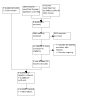

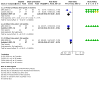


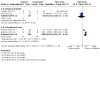


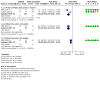
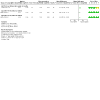

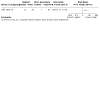
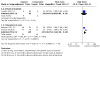

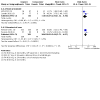

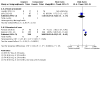


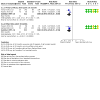


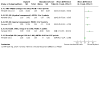
Update of
-
Corticosteroid implants for chronic non-infectious uveitis.Cochrane Database Syst Rev. 2023 Jan 16;1(1):CD010469. doi: 10.1002/14651858.CD010469.pub3. Cochrane Database Syst Rev. 2023. Update in: Cochrane Database Syst Rev. 2023 Aug 29;8:CD010469. doi: 10.1002/14651858.CD010469.pub4. PMID: 36645716 Free PMC article. Updated.
References
References to studies included in this review
Jaffe 2019 {published data only}
-
- CTRI/2014/07/004726. To assess the safety & efficacy of fluocinolone acetonide intravitreal (FAi) insert in patients with chronic, non-infectious uveitis affecting the posterior segment of the eye. trialsearch.who.int/Trial2.aspx?TrialID=CTRI/2014/07/004726 (first received 10 July 2014).
-
- CTRI/2014/12/005337. A research to study the effect of fluocinolone acetonide intravitreal (FAi) insert in patients with inflammation of middle layer of the eye. trialsearch.who.int/Trial2.aspx?TrialID=CTRI/2014/12/005337 (first registered 30 December 2014).
-
- Cai CX, Skalak C, Keenan RT, Grewal DS, Jaffe GJ. Time to disease recurrence in noninfectious uveitis following long-acting injectable fluocinolone acetonide implant. Graefe's Archive for Clinical and Experimental Ophthalmology 2020;258(5):1023-30. - PubMed
-
- EUCTR2013-001810-14-GB. A clinical study of the FAI insert in patients with uveitis in the back of the eye that is not caused by an infection. trialsearch.who.int/Trial2.aspx?TrialID=EUCTR2013-001810-14-GB (first received 19 August, 2013).
-
- Jaffe GJ, Foster CS, Pavesio CE, Paggiarino DA, Riedel GE. Effect of an injectable fluocinolone acetonide insert on recurrence rates in chronic noninfectious uveitis affecting the posterior segment: twelve-month results. Ophthalmology 2019;126(4):601‐10. - PubMed
Kempen 2011 {published data only}
-
- Kempen JH, Altaweel MM, Holbrook JT, Jabs DA, Louis TA, Sugar EA, et al. Randomized comparison of systemic anti-inflammatory therapy versus fluocinolone acetonide implant for intermediate, posterior, and panuveitis: the multicenter uveitis steroid treatment trial. Ophthalmology 2011;118(10):1916-26. - PMC - PubMed
Lowder 2011 {published data only}
-
- Lightman S, Belfort R Jr, Naik RK, Lowder C, Foster CS, Rentz AM, et al. Vision-related functioning outcomes of dexamethasone intravitreal implant in noninfectious intermediate or posterior uveitis. Investigative Ophthalmology & Visual Science 2013;54(7):4864-70. - PubMed
-
- Lowder C, Belfort R Jr, Lightman S, Foster CS, Robinson MR, Schiffman RM, et al. Dexamethasone intravitreal implant for noninfectious intermediate or posterior uveitis. Archives of Ophthalmology 2011;129(5):545-53. - PubMed
-
- NCT00333814. A study of the safety and efficacy of a new treatment for non-infectious intermediate or posterior uveitis. clinicaltrials.gov/show/NCT00333814 (first received 6 June 2006).
-
- Naik RK, Rentz AM, Foster CS, Lightman S, Belfort R Jr, Lowder C, et al. Normative comparison of patient-reported outcomes in patients with noninfectious uveitis. JAMA Ophthalmology 2013;131(2):219-25. - PubMed
-
- Saraiya NV, Patel SS, Goldstein DA. A report of high intraocular pressure with the dexamethasone intravitreal implant. Archives of Ophthalmology 2011;129(12):1638-9. - PubMed
Pavesio 2010 {published data only}
-
- Muller B, Orlic N, Pleyer U. Intravitreal fluocinolone-implant (Retisert) in posterior non-infectious uveitis — intermediate results after 34 weeks [Intravitreales fluocinolon-implantat (retisert) bei posteriorer nichtinfektiöser uveitis – zwischenanalyse nach 34 wochen]. Klinische Monatsblatter fur Augenheilkunde 2004;221(Suppl 7):S8.
-
- NCT00468871. Safety and efficacy of fluocinolone acetonide intravitreal implant vs standardized therapy. clinicaltrials.gov/show/NCT00468871 (first received 3 May 2007).
-
- Pavesio C, Zierhut M, Bairi K, Comstock TL, Usner DW. Evaluation of an intravitreal fluocinolone acetonide implant versus standard systemic therapy in noninfectious posterior uveitis. Ophthalmology 2010;117(3):567-75. - PubMed
-
- Pavesio CE, Bairi K. Evaluation of an intravitreal fluocinolone acetonide implant vs. standard systemic therapy in noninfectious posterior uveitis. American Academy of Ophthalmology 2006:Poster 194. - PubMed
References to studies excluded from this review
Acharya 2004 {published data only}
-
- Acharya N, Young L. Sustained-release drug implants for the treatment of intraocular disease. International Ophthalmology Clinics 2004;44(3):33-9. - PubMed
ACTRN12605000485639 {published data only}
-
- ACTRN12605000485639. A multicenter, randomized, double-masked controlled study to evaluate the safety and efficacy of an intravitreal fluocinolone acetonide (0.59 and 2.1 mg) implant in patients with non-infectious uveitis affecting the posterior segment of the eye. trialsearch.who.int/Trial2.aspx?TrialID=ACTRN12605000485639 (first received 23 September 2005).
Anonymous 1995 {published data only}
-
- Anonymous. Good results from eye implant study. Treatment Review 1995;16:4. - PubMed
Ansari 2010 {published data only}
Arcinue 2013 {published data only}
-
- Arcinue CA, Ceron OM, Foster CS. A comparison between the fluocinolone acetonide (Retisert) and dexamethasone (Ozurdex) intravitreal implants in uveitis. Journal of Ocular Pharmacology and Therapeutics 2013;29(5):501-7. - PubMed
Bollinger 2009 {published data only}
-
- Bollinger KE, Smith SD. Prevalence and management of elevated intraocular pressure after placement of an intravitreal sustained-release steroid implant. Current Opinion in Ophthalmology 2009;20(2):99-103. - PubMed
Callanan 2008 {published data only}
-
- Callanan DG, Jaffe GJ, Martin DF, Pearson PA, Comstock TL. Treatment of posterior uveitis with a fluocinolone acetonide implant: three-year clinical trial results. Archives of Ophthalmology 2008;126(9):1191-201. - PubMed
-
- Ibrahim M, Nguyen QD. Treatment of posterior uveitis with a fluocinolone acetonide implant. Evidence-Based Ophthalmology 2009;10(4):224-6.
-
- Jaffe GJ, Martin D, Callanan D, Levy B. Fluocinolone acetonide intravitreal implant to treat posterior uveitis: 2-year results of a multicenter clinical trial. Investigative Ophthalmology & Visual Science 2005;46(13):ARVO E-abstract 2386.
-
- Jaffe GJ, Martin D, Callanan D, Pearson PA, Levy B, Comstock T. Fluocinolone acetonide implant (Retisert) for noninfectious posterior uveitis: thirty-four-week results of a multicenter randomized clinical study. Ophthalmology 2006;113(6):1020-7. - PubMed
-
- Jaffe GJ, Martin DF, Callanan D, Levy B, Comstock T. Fluocinolone acetonide intravitreal implant to treat posterior segment uveitis: 3-year results of a multicenter clinical trial. Investigative Ophthalmology & Visual Science 2006;47(13):ARVO E-abstract 1523.
Callanan 2020 {published data only}
-
- Callanan D, Nguyen QD, Suhler EB, Paggiarino D, Riedel GE. Reduced risk of recurrence of non-infectious posterior segment uveitis after 0.18 mg fluocinolone acetonide insert: randomized trial. American Journal of Ophthalmology 2020 Feb 20 [Epub ahead of print]. [DOI: 10.1016/j.ajo.2020.02.011] - DOI - PubMed
Campochiaro 2013 {published data only}
-
- Campochiaro PA, Nguyen QD, Hafiz G, Bloom S, Brown DM, Busquets M, et al. Aqueous levels of fluocinolone acetonide after administration of fluocinolone acetonide inserts or fluocinolone acetonide implants. Ophthalmology 2013;120(3):583-7. - PubMed
Cano‐Parra 2006 {published data only}
-
- Cano-Parra J, Diaz-Llopis M. New drugs in the treatment of noninfectious uveitis [Nuevos fármacos en el tratamiento de las uveítis no infecciosas]. Archivos de la Sociedad Espanola de Oftalmologia 2006;81(12):671-3. - PubMed
Ciulla 2021 {published data only}
-
- Ciulla TA, Kapik B, Grewal DS, Ip MS. Visual acuity in retinal vein occlusion, diabetic, and uveitic macular edema: central subfield thickness and ellipsoid zone analysis. Ophthalmology Retina 2021;5(7):633-47. - PubMed
Cornish 2018 {published data only}
-
- Cornish EE, McCluskey PJ. Dexamethasone intravitreal implant for macular oedema and uveitis. Medicine Today 2018;20(1):38-41.
Couret 2020 {published data only}
-
- Couret C, Poinas A, Volteau C, Riche VP, Le Lez ML, Errera MH, et al. Comparison of two techniques used in routine care for the treatment of inflammatory macular oedema, subconjunctival triamcinolone injection and intravitreal dexamethasone implant: medical and economic importance of this randomized controlled trial. Trials 2020;21(1):159. - PMC - PubMed
Eng 2007 {published data only}
-
- Eng K, Kertes P. Randomized controlled study of an intravitreous dexamethasone drug delivery system in patients with persistent macular edema: commentary. Evidence-Based Ophthalmology 2007;8(3):170-2. - PubMed
Ermakova 2003 {published data only}
-
- Ermakova NA. Efficacy of corticosteroids and cyclosporin in the treatment of retinal vasculitis in patients with Behcet's disease. Advances in Experimental Medicine and Biology 2003;528:563-5. - PubMed
Errera 2019 {published data only}
-
- Errera MH, Westcott M, Benesty J, Falah S, Smadja J, Ores R, et al. A comparison of the dexamethasone implant (Ozurdex®) and inferior fornix-based sub-tenon triamcinolone acetonide for treatment of inflammatory ocular diseases. Ocular Immunology and Inflammation 2019;27(2):319-29. - PubMed
Galor 2007 {published data only}
-
- Galor A, Margolis R, Kaiser PK, Lowder CY. Vitreous band formation and the sustained-release, intravitreal fluocinolone (Retisert) implant. Archives of Ophthalmology 2007;125(6):836-8. - PubMed
Garg 2006 {published data only}
-
- Garg S. Fluocinolone acetonide implant (Retisert) for noninfectious posterior uveitis: thirty-four-week results of a multicenter randomized clinical study. Evidence-Based Ophthalmology 2006;7(4):216-7. - PubMed
Goldstein 2007 {published data only}
-
- Goldstein DA, Godfrey DG, Hall A, Callanan DG, Jaffe GJ, Pearson PA, et al. Intraocular pressure in patients with uveitis treated with fluocinolone acetonide implants. Archives of Ophthalmology 2007;125(11):1478-85. - PubMed
-
- Viola F, Staurenghi G, Ratiglia R. Uveitis treated with fluocinolone acetonide implants. Archives of Ophthalmology 2009;127(1):115-6. - PubMed
Jaffe 2000a {published data only}
-
- Jaffe GJ, Ben-Nun J, Guo H, Dunn JP, Ashton P. Fluocinolone acetonide sustained drug delivery device to treat severe uveitis. Ophthalmology 2000;107(11):2024-33. - PubMed
-
- Jaffe GJ, McCallum RM, Branchaud B, Skalak C, Butuner Z, Ashton P. Long-term follow-up results of a pilot trial of a fluocinolone acetonide implant to treat posterior uveitis. Ophthalmology 2005;112(7):1192-8. - PubMed
Jaffe 2000b {published data only}
-
- Jaffe GJ, Pearson PA, Ashton P. Dexamethasone sustained drug delivery implant for the treatment of severe uveitis. Retina 2000;20:402-3. - PubMed
Jaffe 2016 {published data only}
-
- Jaffe GJ, Lin P, Keenan RT, Ashton P, Skalak C, Stinnett SS. Injectable fluocinolone acetonide long-acting implant for noninfectious intermediate uveitis, posterior uveitis, and panuveitis: two-year results. Ophthalmology 2016;123(9):1940-8. - PubMed
Kim 2011 {published data only}
-
- Kim SJ. Diagnosis and management of noninfectious pediatric uveitis. International Ophthalmology Clinics 2011;51(1):129-45. - PubMed
Kuppermann 2007 {published data only}
-
- Kuppermann BD, Blumenkranz MS, Haller JA, Williams GA, Weinberg DV, Chou C, et al. Randomized controlled study of an intravitreous dexamethasone drug delivery system in patients with persistent macular edema. Archives of Ophthalmology 2007;125(3):309-17. - PubMed
Mercante 2007 {published data only}
-
- Mercante AR, Huang SS, Reddy R. Cystoid macular edema in non-infectious uveitis treated with fluocinolone acetonide intravitreal implant: 3-year results of a multi-center clinical trial. Investigative Ophthalmology & Visual Science 2007;48(13):ARVO E-Abstract 280.
Mustakallio 1973 {published data only}
-
- Mustakallio A, Kaufman HE, Johnston G, Wilson RS, Roberts MD, Harter JC. Corticosteroid efficacy in postoperative uveitis. Annals of Ophthalmology 1973;5(6):719-30. - PubMed
NCT02309385 {unpublished data only}
-
- NCT02309385. Safety and efficacy study of DSP-visulex for the treatment of anterior uveitis. clinicaltrials.gov/show/NCT02309385 (first received 1 December 2014).
NCT02482129 {unpublished data only}
-
- NCT02482129. Proof of concept study to evaluate safety and efficacy of LME636 in the treatment of acute anterior uveitis. clinicaltrials.gov/show/NCT02482129 (first received 25 June 2015).
NCT02517619 {unpublished data only}
-
- NCT02517619. Safety and efficacy of iontophoretic dexamethasone phosphate ophthalmic solution in non-infectious anterior uveitis (EGP-437-006). clinicaltrials.gov/show/NCT02517619 (first received 5 August 2015).
NCT02748512 {published data only}
-
- NCT02748512. Utilization and safety of the Mk ii inserter and the safety of the FAi insert in non-infectious uveitis. clinicaltrials.gov/show/NCT02748512 (first received 21 April 2016).
NCT04976777 {published data only}
-
- NCT04976777. A study to evaluate an updated dexamethasone intravitreal (into the eye) applicator in adult participants with macular edema due to diseases of the retina. clinicaltrials.gov/show/NCT04976777 (first received 15 July 2021).
Neger 1996 {published data only}
-
- Neger RE. The eyes have it, too. Positively Aware: the Monthly Journal of the Test Positive Aware Network 1996;7(3):10-1. - PubMed
Novack 2008 {published data only}
-
- Novack GD. Clinical indications for ophthalmic corticosteroids. Ocular Surface 2008;6(4):199-202. - PubMed
Ram 2013 {published data only}
-
- Ram J, Gupta A, Gupta V. Intraoperative dexamethasone implant in uveitis patients with cataract undergoing phacoemulsification. Ocular Immunology and Inflammation 2013;21(6):462-7. - PubMed
Sangwan 2015 {published data only}
-
- Sangwan VS, Paul HA, Usner DW. Safety and efficacy of an intravitreal fluocinolone acetonide implant in subjects with noninfectious uveitis. American Academy of Ophthalmology 2007:Poster 199.
-
- Scassellati Sforzolini B. Reply to Hall J: "Use of the fluocinolone acetonide intravitreal implant for the treatment of noninfectious posterior uveitis: 3-year results of a randomized clinical trial in a predominantly Asian population". Ophthalmology and Therapy 2015;4(1):67‐68. [DOI: 10.1007/s40123-015-0030-6] - DOI - PMC - PubMed
Taylor 2012 {published data only}
-
- Taylor SR, Tomkins-Netzer O, Joshi L, Morarji J, McLoone E, Lightman S. Dexamethasone implant in pediatric uveitis. Ophthalmology 2012;119(11):2412. - PubMed
Wen 1991 {published data only}
-
- Wen S, Gao R, Hu Z. Comparison of Chinese traditional therapy combined with Western medicine and Western medicine alone in the treatment of uveitis. Eye Science 1991;7(4):205-8. - PubMed
Williams 2009 {published data only}
-
- Williams G A, Kuppermann B D, Blumenkranz M S, Haller J A, Whitcup S M, Weinberg D V. Treatment of inflammatory macular edema with a dexamethasone posterior-segment drug delivery system. American Academy of Ophthalmology 2004:Poster 87.
-
- Williams GA, Haller JA, Kuppermann BD, Blumenkranz MS, Weinberg DV, Chou C, et al. Dexamethasone posterior-segment drug delivery system in the treatment of macular edema resulting from uveitis or Irvine-Gass syndrome. American Journal of Ophthalmology 2009;147(6):1048-54. - PubMed
References to ongoing studies
ChiCTR1900026160 {published data only}
-
- ChiCTR1900026160. A phase III, multi-center, randomized, double-blind, controlled, safety and efficacy study for a fluocinolone acetonide intravitreal (FAi) insert in subjects with chronic non-infectious uveitis affecting the posterior segment of the eye. trialsearch.who.int/Trial2.aspx?TrialID=ChiCTR1900026160 (first received 24 September 2019).
NCT05070728 {published data only}
-
- NCT05070728. Safety and efficacy of an injectable fluocinolone acetonide intravitreal insert (FAi). clinicaltrials.gov/show/NCT05070728 (first received 6 October 2021).
NCT05101928 {published data only}
-
- NCT05101928. Ozurdex monotherapy trial. clinicaltrials.gov/show/NCT05101928 (first received 21 October 2021).
Additional references
Abdulla 2022
Bollinger 2011
-
- Bollinger K, Kim J, Lowder CY, Kaiser PK, Smith SD. Intraocular pressure outcome of patients with fluocinolone acetonide intravitreal implant for noninfectious uveitis. Ophthalmology 2011;118(10):1927-31. - PubMed
Callanan 2008
-
- Callanan DG, Jaffe GJ, Martin DF, Pearson PA, Comstock TL. Treatment of posterior uveitis with a fluocinolone acetonide implant: three-year clinical trial results. Archives of Ophthalmology 2008;126(9):1191-201. - PubMed
Covidence [Computer program]
-
- Covidence. Version accessed 23 Feb 2022. Melbourne, Australia: Veritas Health Innovation. Available at covidence.org.
Deeks 2021
-
- Deeks JJ, Higgins JPT, Altman DG. Chapter 10: Analysing data and undertaking meta-analyses. In: Higgins JPT, Thomas J, Chandler J, Cumpston M, Li T, Page MJ, et al, editor(s). Cochrane Handbook for Systematic Reviews of Interventions Version 6.2 (updated February 2021). Cochrane, 2021. Available from training.cochrane.org/handbook/archive/v6.2.
Durrani 2004
-
- Durrani OM, Meads CA, Murray PI. Uveitis: a potentially blinding disease. Ophthalmologica 2004;218(4):223-36. - PubMed
EuroQoI 1990
-
- The EuroQol Group. EuroQol - a new facility for the measurement of health-related quality of life. Health Policy 1990;16:199-208. - PubMed
Ferris 1982
-
- Ferris FL 3rd, Kassoff A, Bresnick GH, Bailey I. New visual acuity charts for clinical research. American Journal of Ophthalmology 1982;94(1):91-6. - PubMed
Glanville 2006
Goldstein 2007a
-
- Goldstein DA, Godfrey DG, Hall A, Callanan DG, Jaffe GJ, Pearson PA, et al. Intraocular pressure in patients with uveitis treated with fluocinolone acetonide implants. Archives of Ophthalmology 2007;125(11):1478-85. - PubMed
Gritz 2004
-
- Gritz DC, Wong IG. Incidence and prevalence of uveitis in Northern California; the Northern California epidemiology of uveitis study. Ophthalmology 2004;111(3):491-500. - PubMed
Haller 2010
-
- Haller JA, Bandello F, Belfort Jr R, Blumenkranz MS, Gillies M, Heier J, et al. Randomized, sham-controlled trial of dexamethasone intravitreal implant in patients with macular edema due to retinal vein occlusion. Ophthalmology 2010;117(6):1134-46. - PubMed
Haupert 2000
-
- Haupert CL, Jaffe GJ. New and emerging treatments for patients with uveitis. International Ophthalmology Clinics 2000;40(2):205-20. - PubMed
Hays 2001
-
- Hays RD, Morales LS. The RAND-36 measure of health-related quality of life. Annals of Medicine 2001;33:350-7. - PubMed
Higgins 2021
-
- Higgins JPT, Savović J, Page MJ, Elbers RG, Sterne JAC. Chapter 8: Assessing risk of bias in a randomized trial. In: Higgins J, Thomas J, Chandler J, Cumpston M, Li T, Page M, et al, editor(s). Cochrane Handbook for Systematic Reviews of Interventions Version 6.2 (updated February 2021). Cochrane, 2021. Available from training.cochrane.org/handbook/archive/v6.2.
Jaffe 2006
-
- Jaffe GJ, Martin DF, Callanan D, Levy B, Comstock T. Fluocinolone acetonide intravitreal implant to treat posterior segment uveitis: 3-year results of a multi-center clinical trial. Investigative Ophthalmology & Visual Science 2006;47(13):ARVO E-abstract 1523.
Jager 2004
-
- Jager RD, Aiello LP, Patel SC, Cunningham ET Jr. Risks of intravitreous injection: a comprehensive review. Retina 2004;24(5):676-98. - PubMed
Li 2021
-
- Li T, Higgins JPT, Deeks JJ. Chapter 5: Collecting data. In: Higgins JPT, Thomas J, Chandler J, Cumpston M, Li T, Page MJ, et al, editor(s). Cochrane Handbook for Systematic Reviews of Interventions Version 6.2 (updated February 2021). Cochrane, 2021. Available from training.cochrane.org/handbook/archive/v6.2.
Lightman 2013
-
- Lightman S, Belfort R Jr, Naik RK, Lowder C, Foster CS, Rentz AM, et al. Vision-related functioning outcomes of dexamethasone intravitreal implant in noninfectious intermediate or posterior uveitis. Investigative Ophthalmology & Visual Science 2013;54(7):4864-70. - PubMed
Logan 2016
-
- Logan SA, Weng CY, Carvounis PE. Intravitreal steroid implants in the management of retinal disease and uveitis. International Ophthalmology Clinics 2016;56(4):127-49. - PubMed
Mangione 2001
-
- Mangione CM, Lee PP, Gutierrez PR, Spritzer K, Berry S, Hays RD, et al. Development of the 25-item National Eye Institute Visual Function Questionnaire. Archives of Ophthalmology 2011;119(7):1050-8. - PubMed
Modugno 2021
Mohammad 2007
-
- Mohammad DA, Sweet BV, Elner SG. Retisert: is the new advance in treatment of uveitis a good one? Annals of Pharmacotherapy 2007;41(3):449-54. - PubMed
Nussenblatt 1990
-
- Nussenblatt RB. The natural history of uveitis. International Ophthalmology 1990;14(5-6):303-8. - PubMed
Pickard 2007
RevMan Web 2022 [Computer program]
-
- Review Manager Web (RevMan Web). Version 4.19.0. The Cochrane Collaboration, 2022. Available at revman.cochrane.org.
Schünemann 2013
-
- Schünemann H, Brożek J, Guyatt G, Oxman A. Handbook for grading the quality of evidence and the strength of recommendations using the GRADE approach (updated October 2013). GRADE Working Group, 2013. Available from gdt.guidelinedevelopment.org/app/handbook/handbook.html.
Schünemann 2021
-
- Schünemann HJ, Higgins JP, Vist GE, Glasziou P, Akl EA, Skoetz N, et al. Chapter 14: Completing ‘Summary of findings’ tables and grading the certainty of the evidence. In: Higgins JPT, Thomas J, Chandler J, Cumpston M, Li T, Page MJ, et al, editor(s). Cochrane Handbook for Systematic Reviews of Interventions Version 6.2 (updated February 2021). Cochrane, 2021. Available from training.cochrane.org/handbook/archive/v6.2.
Suner 2009
-
- Suner IJ, Kokame GT, YU E, Ward J, Dolan C, Bressler NM. Responsiveness of NEI VFQ-25 to changes in visual acuity in neovascular AMD: validation studies from two phase 3 clinical trials. Investigative Ophthalmology & Visual Science 2009;50(8):3629-35. - PubMed
Suttorp‐Schulten 1996
Taylor 2010
-
- Taylor SR, Isa H, Joshi L, Lightman S. New developments in corticosteroid therapy for uveitis. Ophthalmologica 2010;224(Suppl 1):46-53. - PubMed
Testi 2019
WebPlotDigitizer 2021 [Computer program]
-
- WebPlotDigitizer. Rohatgi A, Version 4.5. Pacifica, California, USA: Ankit Rohatgi, 2021. Available from: automeris.io/WebPlotDigitizer.
Williams 2009
-
- Williams GA, Haller JA, Kuppermann BD, Blumenkranz MS, Weinberg DV, Chou C, et al. Dexamethasone posterior-segment drug delivery system in the treatment of macular edema resulting from uveitis or Irvine-Gass syndrome. American Journal of Ophthalmology 2009;147(6):1048-54. - PubMed
References to other published versions of this review
Brady 2013
Publication types
MeSH terms
Substances
Grants and funding
LinkOut - more resources
Full Text Sources
Medical

